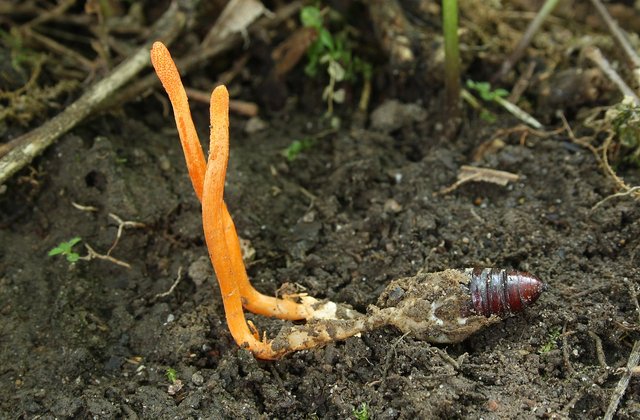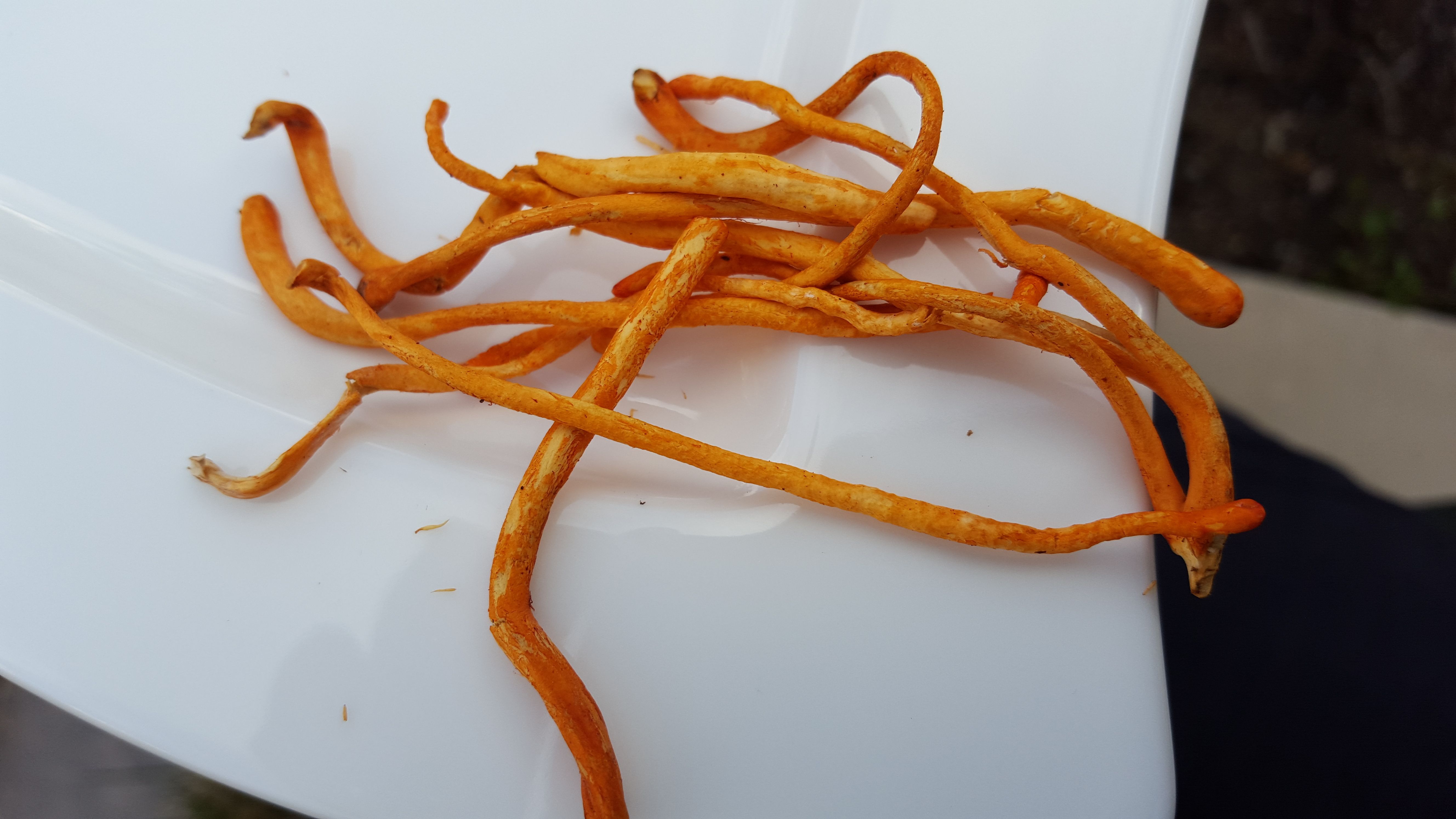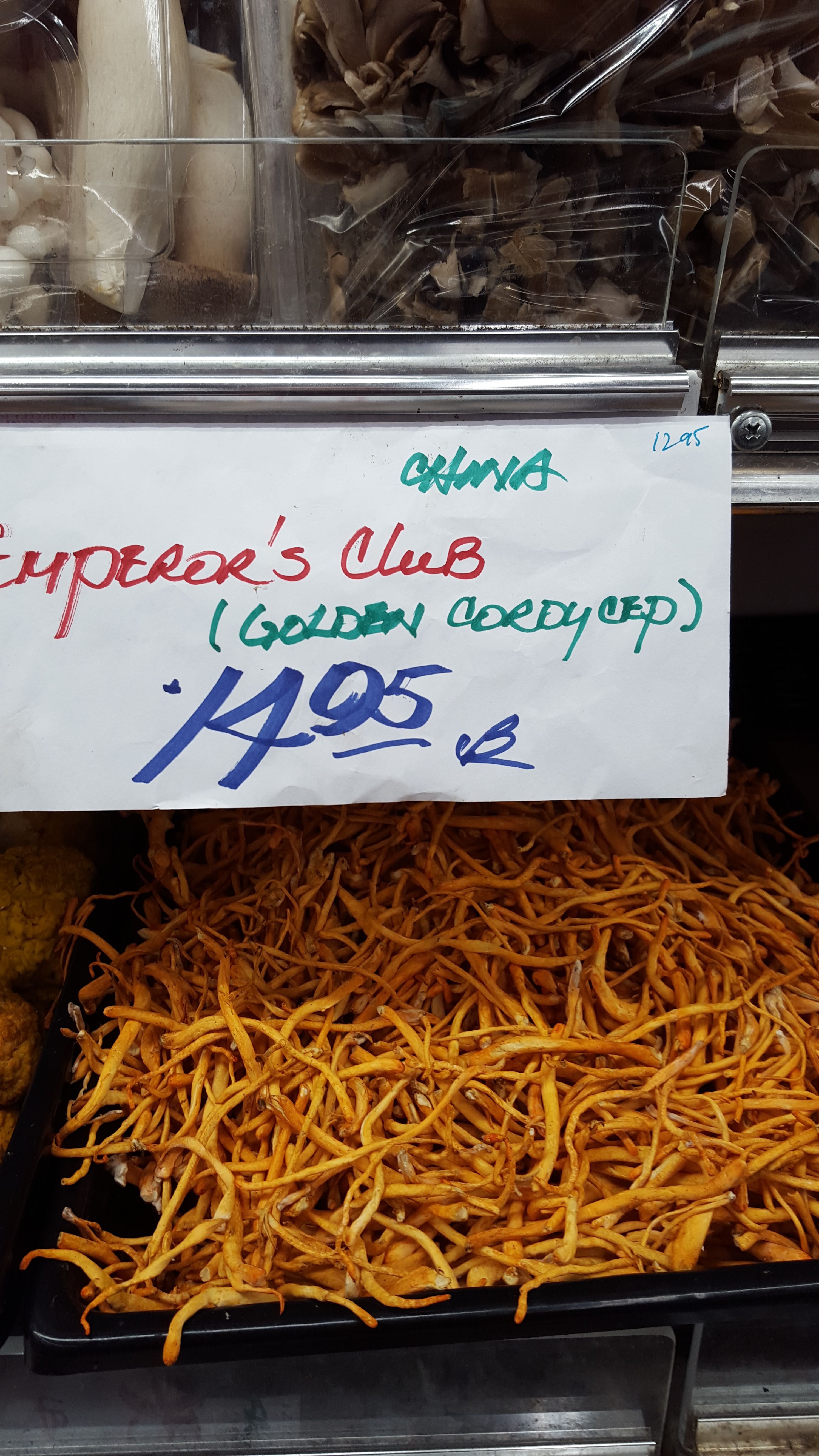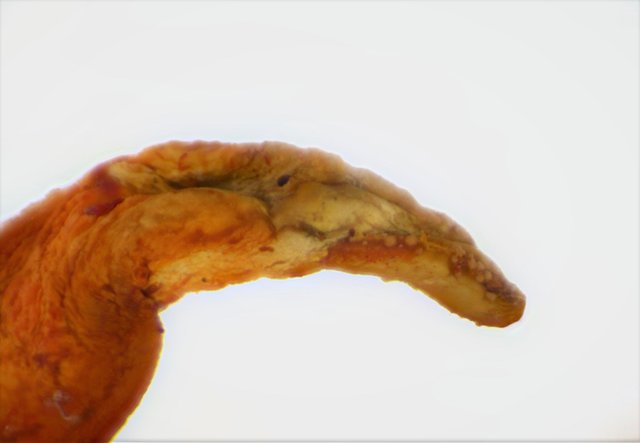These posts are not for foraging. They are intended for entertainment and intellectual satisfaction only. These posts are not a field guide nor comprehensive in any way - their accuracy is not assured in any way. Do not eat wild mushrooms unless you are a professional, have substantial professional assistance or have a wealth of personal experience with a specific species. Do not make any foraging decisions based on these posts. To do so could be dangerous or life threatening.
I do talk, or at least imply, about eating mushrooms in this post. If you purchase mushrooms from a reputable reseller - like Berkeley Bowl in the bay area for instance - then by all means, indulge! But beware, if it is your first time trying a new species of mushroom, you should try a little first and wait a day, if you want to be perfectly safe. Although mushrooms you buy in the store may be generally safe, you never know if someone will have an individualized allergic reaction to them.

Behold, these weirdos.
That is Cordyceps militaris and, if you live in the Bay Area, you can buy it, or a close cousin of it, in a local supermarket.
Unlike most other mushrooms, that tend to grow on innocuous, immobile things like, oh, I don't know, dirt or wood - these crazy bastards seek out a slightly different medium. They grow on a variety of insect pupae generally, although the internet is replete with images of them growing, en masse, on fully grown insects of various shapes and sizes.
Thanks to the wonders of global trade I was able to buy a heaping handful of these bizarre fungi.

Like most - or possibly all species in the Cordyceps genus - these guys are parasitic in nature.
They are ascomycetes, a detail we were able to highlight in another species of the genus C.capitata. What that means is that the spores develop in -
microscopically speaking - long asci or chambers, inside of the mushroom and then are extruded out when the time is right, breaking into small segments. If you go back and look at C.capitata, the spores there were fairly long, over 15 microns in length.
However, the spores for the species featured here is almost certainly different. In fact they may be very different indeed. Unfortunately, because I got them in California, by they time they arrived at my microscope they were desiccated, and my efforts to collect spores from them went no where. But depending on which species they are exactly, the spores are either fairly short and segmented, or, bizarrely, super long and extruding from the asci almost completely whole.
Let's take a closer look.

The fruiting bodies were all bright orange.
This up close shot shows a kind of textured surface. The overall combination, for me, was heavily reminiscent of fried Cheetos. The average width of the fruiting body is 3mm, while the length varies pretty substantially, from around 20mm to over 40mm in length.
In my return from vacation post, I actually made a mistake as far as this species is concerned. I linked, as I did below, to the species pictured above, depicted coming out of that caterpillar's head. That species is Cordyceps sinensis.
The reason I made the error there is because of a combination of too little knowledge and bit of misdirection. First, the sign at Berkeley Bowl did not include a scientific species names. However, it did include a label with two common nicknames for the species.

The Emporer's Club or the Golden Cordyceps
This had me thinking C.militaris. But then the "China" announcement, indicating the that was where the mushrooms were grown, threw me for a loop. I was under the impression that the Chinese cultivated primarily C.sinensis, along with the Tibetan and Nepalese market for those mushrooms.
However, that is just not the case by all accounts, because these mushrooms are definitely not C.sinensis. You can see in the photo above of the caterpillar that C.sinensis is a much darker color. I figured that could be the mushroom changing color as it dried out, but it's been another week and the samples are still bright orange.
Unfortunately, my compound microscopy has not proven up to the challenge of finding useful information on the three very dry samples I ended up retaining, therefore I cannot be 100% certain whether these are C.militaris or, possibly, the species described in source number 2, C. pseudomilitaris. This species shares many of the characteristics of C.militaris, including its orange color and the ability to easily cultivate it off of the larvae which it prefers in nature.
However, one big difference is the spore size. Whereas C.militaris spores break into short little pieces, C.pseudomilitaris spores are so much weirder. Take this absolutely disgusting description of the spore extrusion from the research paper cited below.
Whole, filiform ascospores [,nearly 300 microns in length] were discharged from the perithecia. These fell slowly, landing up to 3-4 cm distant from the stroma.
A single, 300 micron spore is super long and would be visible to the naked eye. That they are extruded with sufficient force to lang 3-4 cm from the point of expulsion is both amazing and, for some reason, particularly disgusting.
I can't be totally certain that these are not C.pseudomilitaris, but whichever species they are, they are almost certainly not grown, at scale, on bugs.

In nature, this tendril at the base of the mushroom would be attached to the body of a dead insect.
Starting at this base, here magnified 30-50x, the mushroom grows up and out of the dead bug. To be clear, the mushroom is the one who killed the bug, rather than finding a bug that was already dead.
However, it would not be cost effective, at least for this species, for the cultivation to use bugs as the growth medium. That appears to be the case for C.sinensis, which sell for insane prices. But luckily for consumers everywhere, C.militaris does not, technically, require a bug to thrive. In fact, it takes very well to a growth medium of grain and/or rice. Somewhere in China, and probably in the US, there are mushroom farmers growing "fields" of these things.
Whereas in nature the mycelium from which the fruiting body spawns would first develop inside of the dead insect, in cultivation the mycelium spawns inside of the non-insect growth substrate and then the fruiting body pops out of that.

Cordycep species are some of the strangest fungi on Earth
They have perhaps the most badass life cycle you'll ever see, and are a great source of material for freaking out friends at parties, if you enjoy that sort of thing. The fact that I was able to purchase them at a supermarket is just jaw dropping to me. Maybe I'm gonna need to move to California.
Photos are my own, except:
Information Sources:
[1]Kuo, M. (2006, October). Cordyceps militaris. Retrieved from the MushroomExpert.Com Web site
[2]Cordyceps khaoyaiensis and C. pseudomilitaris, two new
pathogens of lepidopteran larvae from Thailand, NIGEL L. HYWEL-JONES
National Biological Control Research Centre, PO Box 9-52, Kasetsart University, Bangkhen, Bangkok 10900, Thailand
[3]Cordeyceps sinensis via Wikipedia
[4]Mushroom Appreciation on C.sinensis
Being A SteemStem Member
Downvoting a post can decrease pending rewards and make it less visible. Common reasons:
Submit
That's a nice thing about being in the Pacific Northwest -- there are so many different mushrooms in the markets. Cultivated and wild-crafted. It's a great way for people to practice identification and cooking. And it shows that eating these mushrooms is not the dangerous business that so many folks think. I'm glad you got to see so many. And I hope the next time you are out West, there has been plenty of rain for you to find lots and lots of mushrooms in all their glory! :D
Downvoting a post can decrease pending rewards and make it less visible. Common reasons:
Submit
It really is pretty amazing - there is such mycological accessibility. I ate more species of mushrooms from Berkeley bowl than I had in the entire length of my life previously.
Actually, this cordyceps mushroom, although the most generally interesting, actually provided me with the least amount of content to write about from first hand experience. many of the other mushrooms I purchased should clearly available spores and gills to examine, which will be excellent practice.
Downvoting a post can decrease pending rewards and make it less visible. Common reasons:
Submit
So cool, @dber! The North American Mycological Association's national foray is in Salem, Oregon this year, Oct 11-14. Maybe you will be up for another western US trip by then! It should be a great time and place for finding a lot of different mushrooms!
Downvoting a post can decrease pending rewards and make it less visible. Common reasons:
Submit
That's a great idea - I'm trying to build up points with southwest, so maybe this would be doable by then!
Downvoting a post can decrease pending rewards and make it less visible. Common reasons:
Submit
Never in my life have I seen such strange mushrooms.
Do you eat those? If so, what do they taste like? They look poisonous to me lol
Downvoting a post can decrease pending rewards and make it less visible. Common reasons:
Submit
folks do - I did when I purchased them at Berkeley Bowl -actually this reminds me I forgot my disclaimer! BRB
Downvoting a post can decrease pending rewards and make it less visible. Common reasons:
Submit
Nice disclaimer too. Ha.
Still a strange looking fungi.
Downvoting a post can decrease pending rewards and make it less visible. Common reasons:
Submit
I didn't know shit about mycology until I watched this video on the Joe Rogan Experience.
It's freaky to think about how important they really are.
Downvoting a post can decrease pending rewards and make it less visible. Common reasons:
Submit
awesome - I didn't know rogan had stamets on.
Downvoting a post can decrease pending rewards and make it less visible. Common reasons:
Submit
They say cordeyceps is beneficial to eat, but I cannot get passed the way they reproduce. The stuff of movies.
Downvoting a post can decrease pending rewards and make it less visible. Common reasons:
Submit
I totally get it - it put me at ease that these particular fruiting bodies were almost certainly grown in rice as a medium. They had an intensely nutty flavor - my wife absolutely loved them
Downvoting a post can decrease pending rewards and make it less visible. Common reasons:
Submit
I mean, who would eat this? After all the media coverage of their bug murdering nature and computer games based on human zombies brought about due to rogue cordyceps? I'd have thought it would be a marketing nightmare lol.
The macro photography is looking great!
Downvoting a post can decrease pending rewards and make it less visible. Common reasons:
Submit
(I would) ;)
But really though, they were actually quite tasty - and in Asia, boy do they think cordyceps are special.
And, actually, there might be some scientific weight behind that idea. A google scholar search for cordyceps species and you'll turn up a wide range of research, often about its potential cancer/tumor fighting properties - or the properties of certain extractable compounds inside them.
Not saying eating it does anything - but boy do folks think otherwise
Downvoting a post can decrease pending rewards and make it less visible. Common reasons:
Submit
Yea, The Last of Us was I believe inspired by Cordyceps. I guess they're used for medicinal purposes but I'm grossed out by them regardless.
Downvoting a post can decrease pending rewards and make it less visible. Common reasons:
Submit
That's the game I had in mind but brain farted lol. Amazing game, too. I ought to replay some time.
Downvoting a post can decrease pending rewards and make it less visible. Common reasons:
Submit
Cool post thanks.
Downvoting a post can decrease pending rewards and make it less visible. Common reasons:
Submit